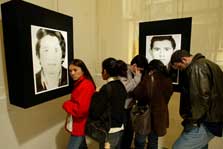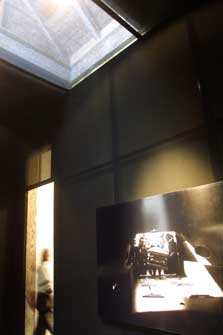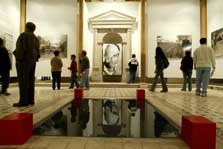
|
|

Yuyanapaq means “to remember” in Quechua, the language spoken by most of the estimated 69,000 people who were killed or disappeared during political violence in Peru at the end of the last century.
It is also the name given to a unique exhibition in the Peruvian capital Lima, where the story of the 20 years of bitter fighting between the government and insurgent rebels has been told.
Central to this memorial to the victims is a large collection of photographs recording the suffering which left many thousands of Peruvians homeless and the victims of rape as well as those who were killed or injured.
Yuyanapaq resulted from Peru’s Truth and Reconciliation Commission, which published its Final Report in 2003. It laid the blame on the Shining Path, a Maoist guerilla group which launched an uprising in 1980, and the army and police, which it said played a part in "crimes against humanity" in their response to the rebels.
"A memorial museum constitutes homage to the victims, but at the same time signifies a kind of permanent promise that nothing like this will happen again in this country," said Salamon Lerner, the commission’s head.
Locating, documenting and displaying the 250 images at the museum was the work of the photographic project’s two directors, Mayu Mohanna and Nancy Chappell.
“Over one and a half years, we researched photographic archives all over the country looking for images of the events in 20 years of war,” says Nancy Chapell. “We examined more than 90 archives in newspapers, magazines, international photographic agencies, family albums, police files, private collections and churches in the Andes. As a result, we identified 1700 photos from which the choice of 250 was made”.
“The Truth Commission wanted to give a voice to the photographers who were eye
witnesses to all those years of violence,” adds Nancy.
Among the images on display were some from World Press Photo seminar attendees
and prize-winners Jaime Rázuri, Silvia Izquierdo and Cecilia Larrabure. Both
Mayu Mohanna and Nancy Chappell have themselves been involved in World Press
Photo seminars and Mayu took part in a Joop Swart Masterclass in 2001.
Among the exhibits was an audio-visual experience in the Testimonies Room.
where visitors could see photographs of victims killed in the violence and hear
the testimony of relatives speaking at the Truth and Reconciliation Commission
into the deaths.
The museum, housed in a building temporarily donated by the Pontificia
Universidad Católica del Perú, opened in August 2003 and attracted more
than 200,000 visitors in nineteen months. The fact that the house was a partial
ruin helped to heighten the effect of the photographs, says Nancy.
“It is the first time that Peruvians, mainly people from Lima, can really see
what happened,"she says.
“During the years of war and after, we could only could see our history in
fragments, but with Yuyanapaq, Peruvians can get a whole impression of what
really happened - even more so because many of the pictures have never been
shown before. The images have made Peruvians get closer to and become more compassionate
for all the victims. Now we share a visual memory.”
Originally, the university lent the house for the exhibition for four months but extended that to a year and a half when they saw how many people were visiting. Yuyanapaq closed in April this year but work is now starting to transfer all the images and installations to Lima’s Museo de la Nación where Nancy and Mayu will completely replan the project for its new surroundings.
“We think it is a great idea because, as a national museum, it should show
this important part of our history, “says Mayu. “But we also think that the
whole country - the victims, their families and the future generations - need
a memorial; a special place where people can go specially to remember.”
Click link to external site:
Pontificia Universidad Católica del Perú
|
|


The audio-visual Testimonies room.


A room devoted to widows of those who died.


The Homage to the Victims room included a water feature.

|
|
